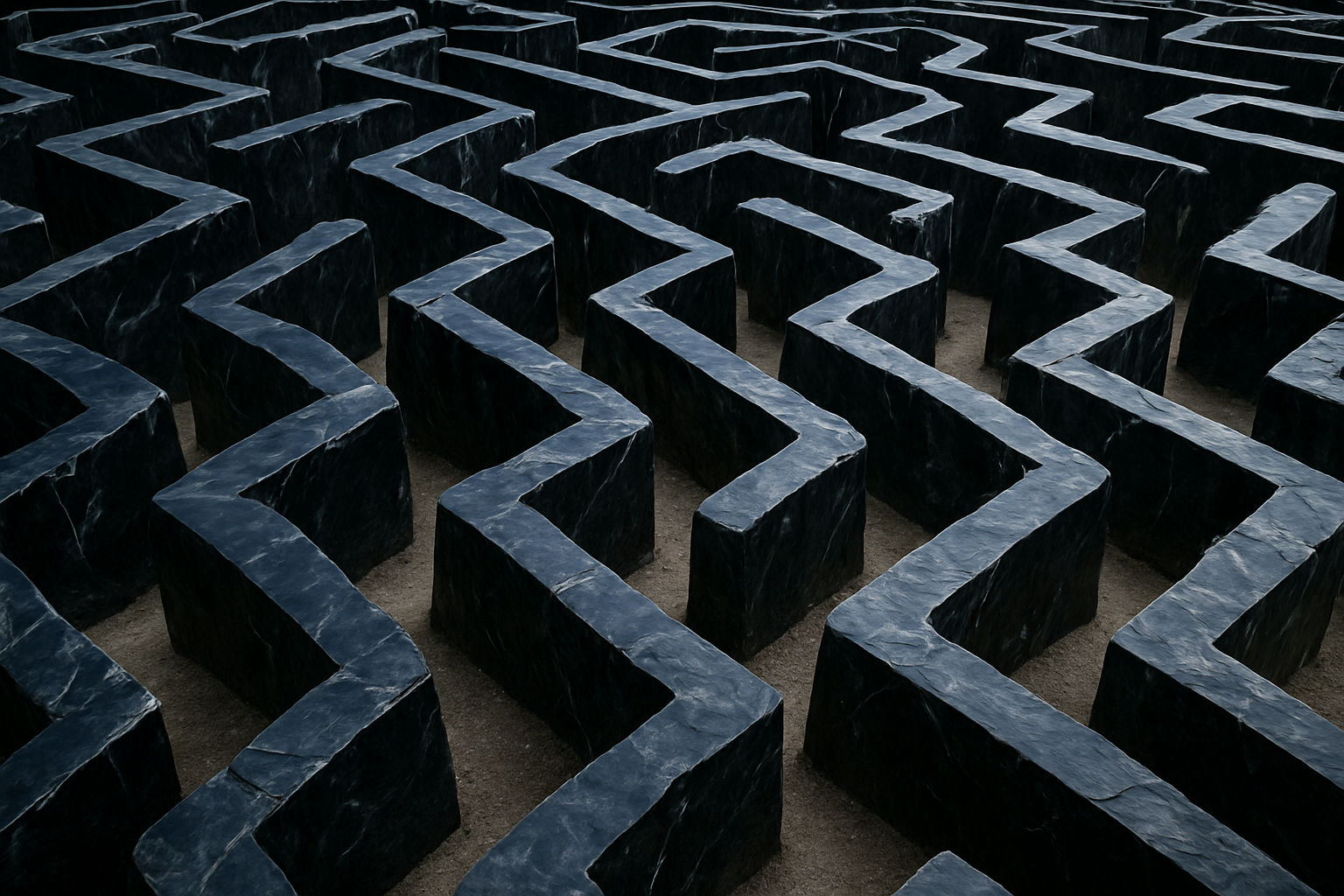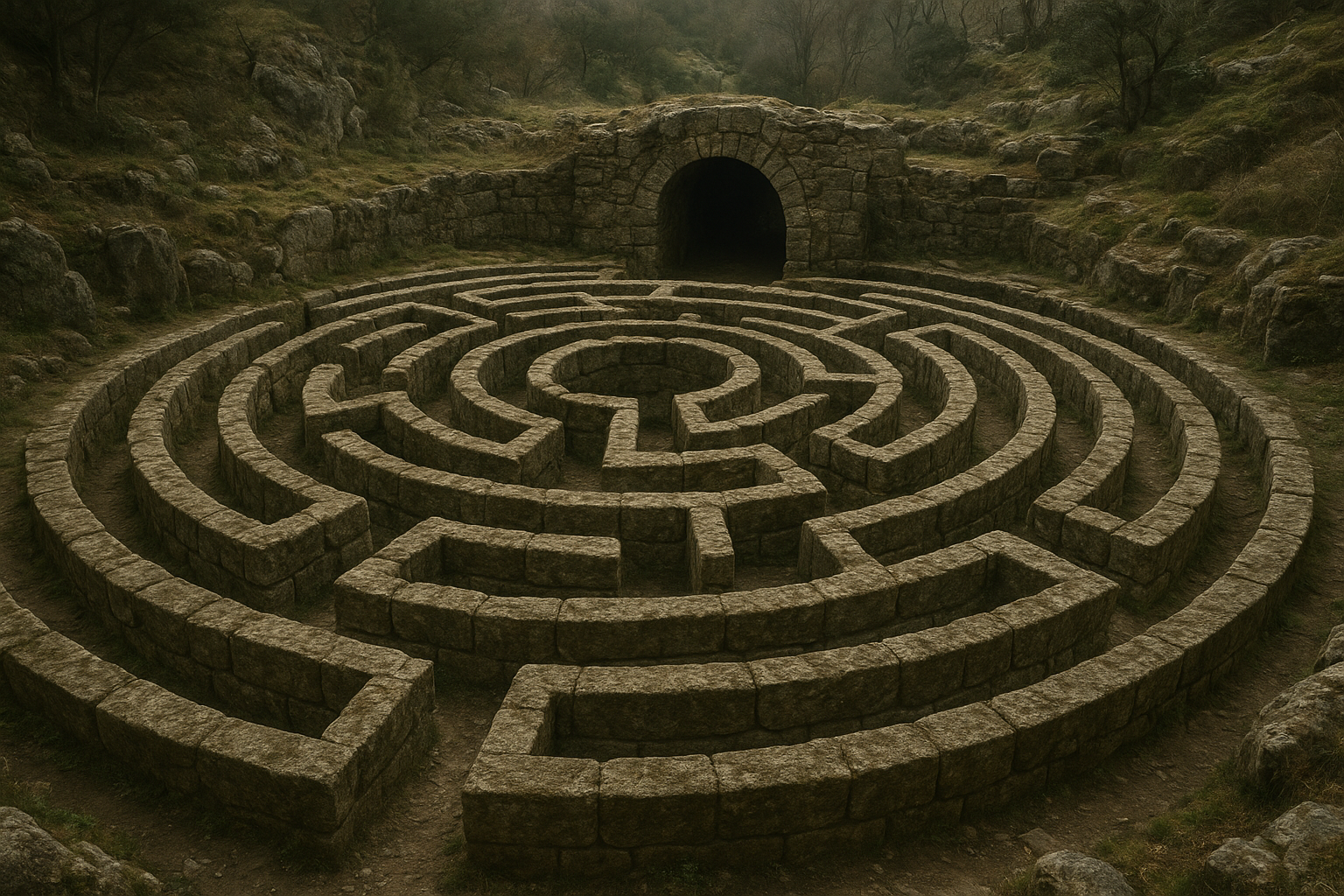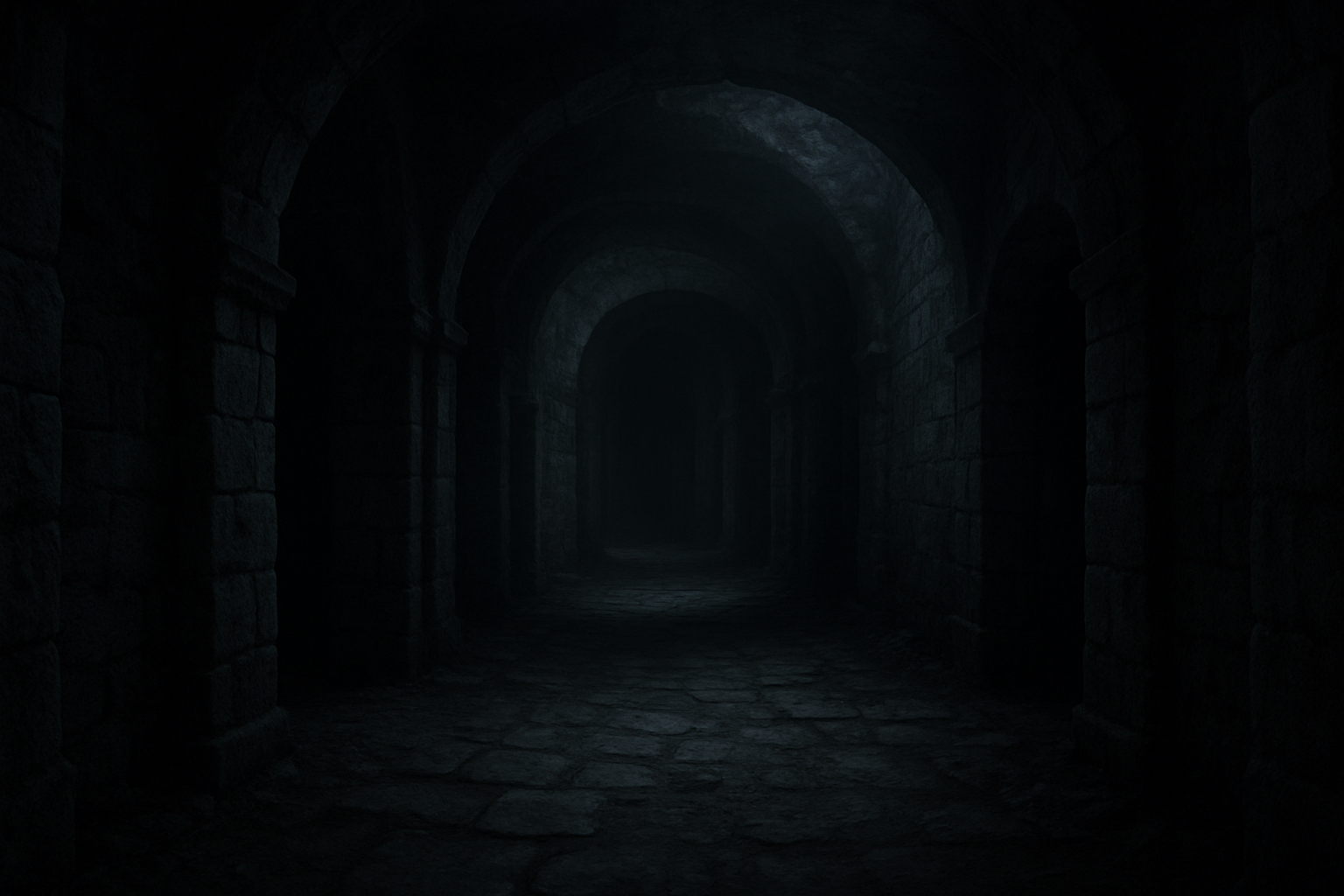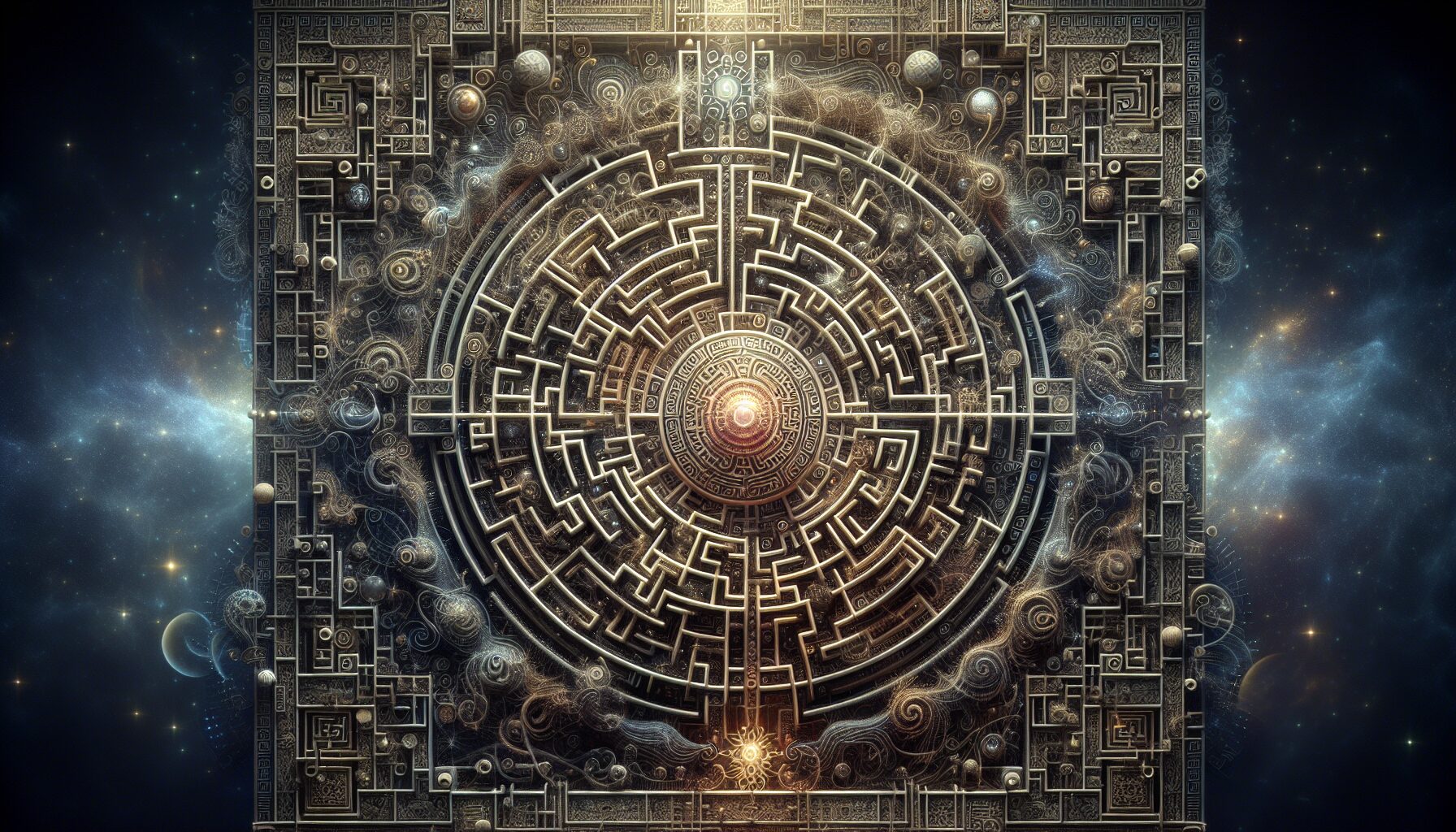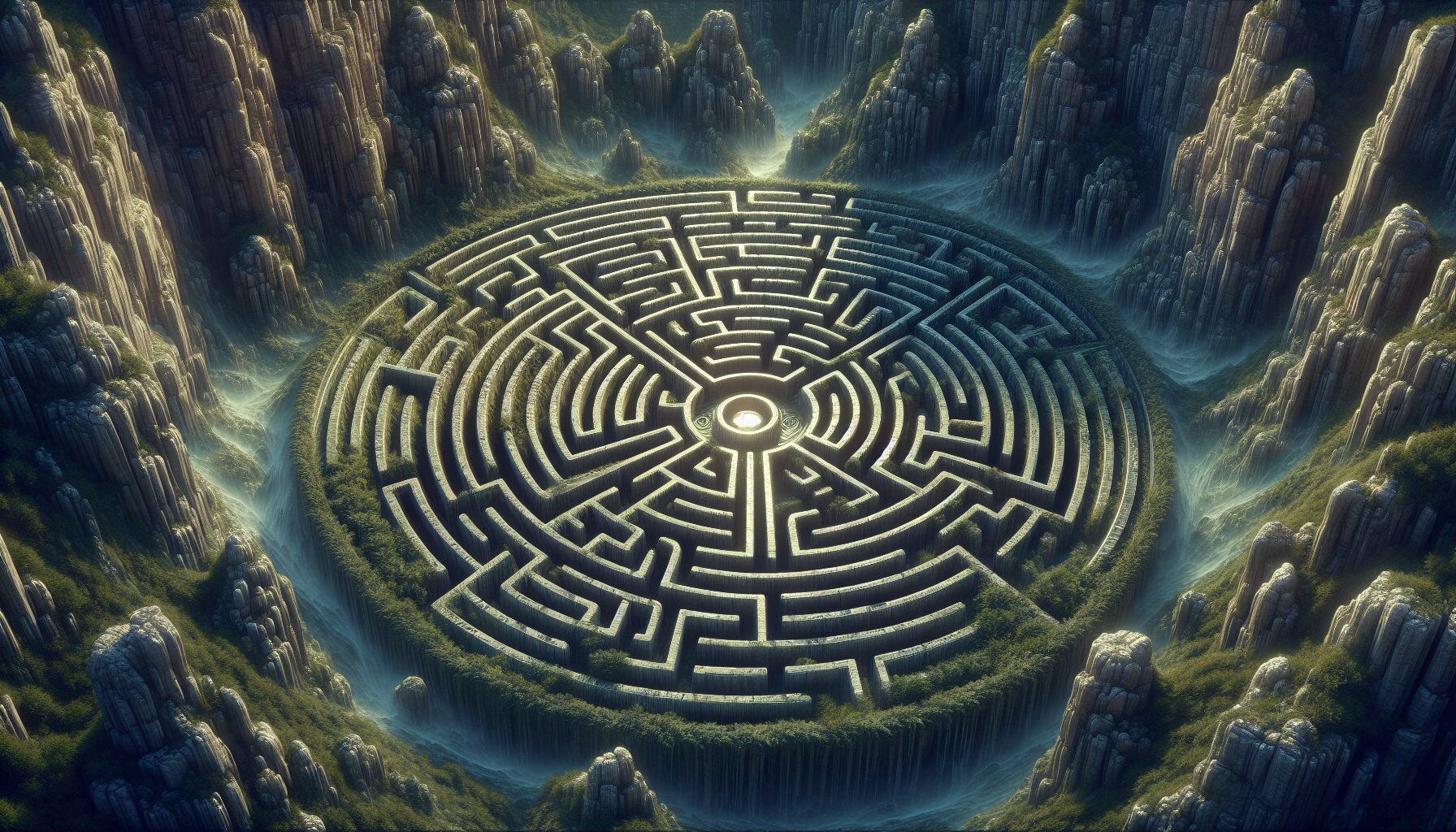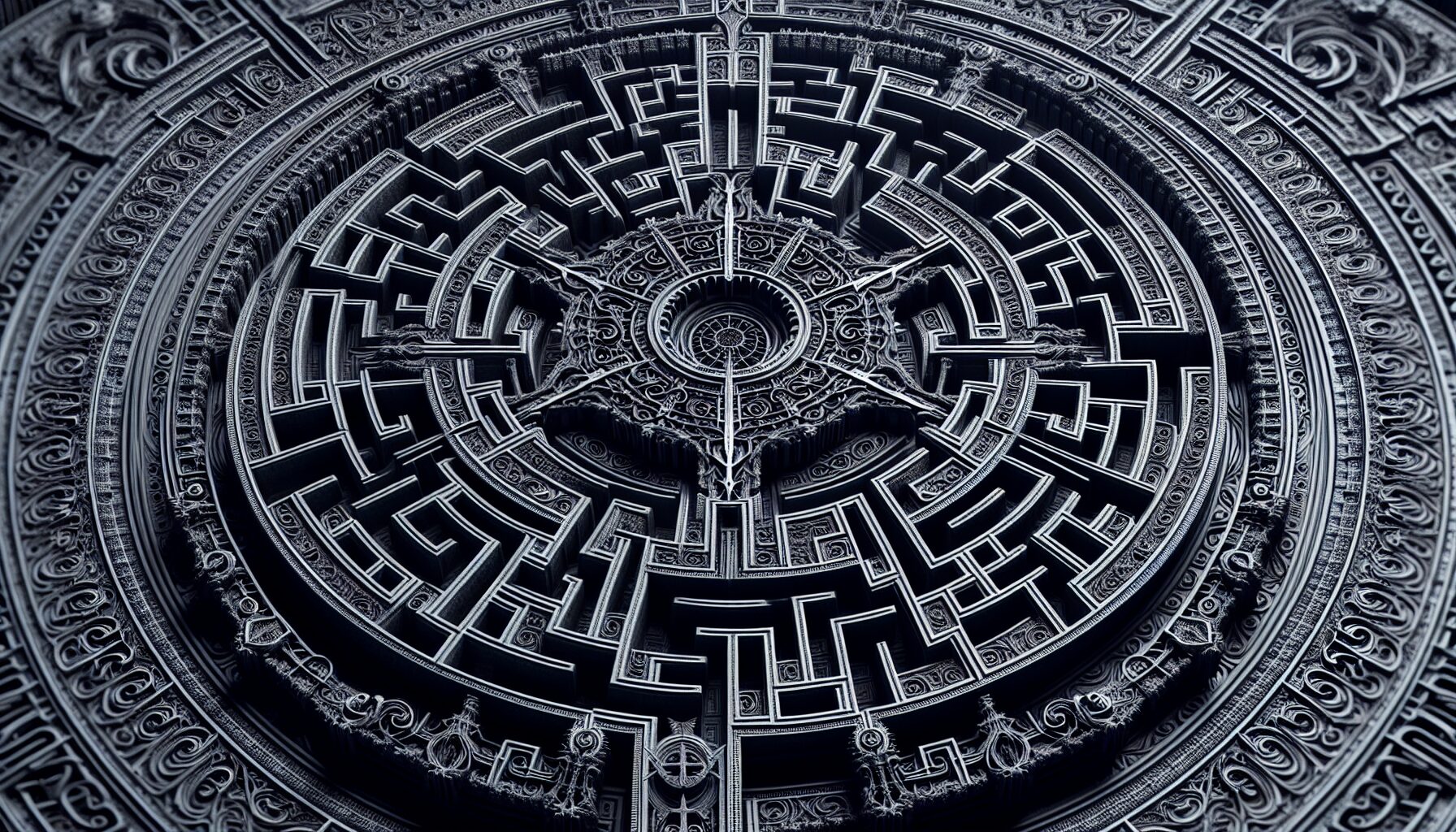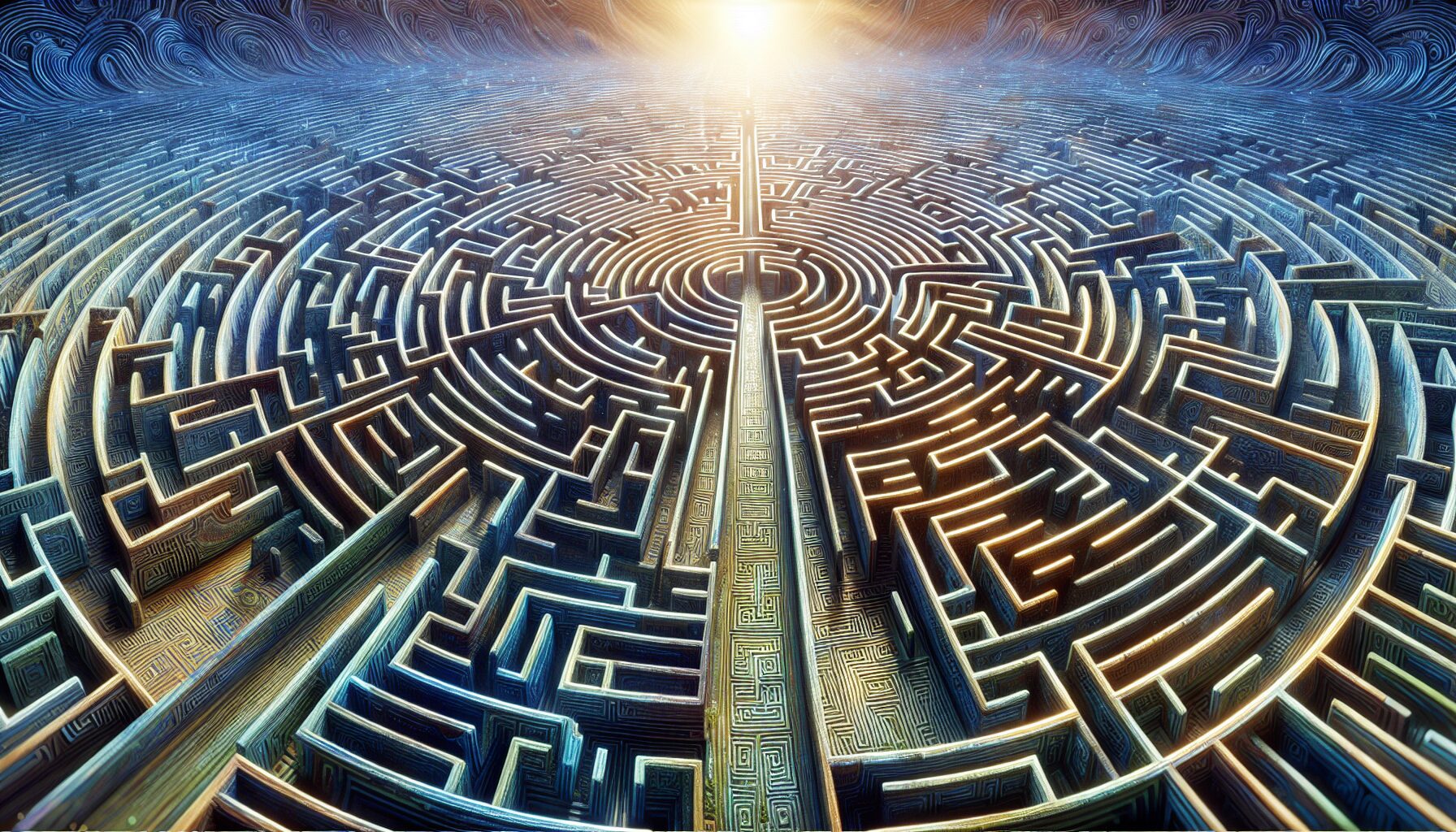The world is full of mysteries, from the depths of the oceans to the expanse of the cosmos. Among these enigmas is the elusive Obsidian Labyrinth, a fabled network of paths rumored to reveal itself only to those with the willingness to wander beyond the beaten path and delve into the unknown.
“The Obsidian Labyrinth is not just a place; it is a journey, an exploration within one’s own soul as much as it is of the earth beneath one’s feet.” – Mysterious Landscapes, 2023
The Genesis of the Legend
The legend of the Obsidian Labyrinth is steeped in ancient lore, dating back to times immemorial. It is said that the labyrinth was constructed by an ancient civilization long lost to history, their knowledge and culture consumed by time like sand swept by the wind.
- Construction: Legends suggest that the labyrinth is carved from black volcanic glass, creating surfaces that are at once both perilous to touch and mesmerizing to behold.
- Purpose: While its original purpose remains unknown, theories abound. Some suggest it was a spiritual pilgrimage site, while others believe it served as a fortress or a repository of wisdom.
- Disappearance: Over the centuries, sightings of the labyrinth have grown scarce, leading many to believe that it may no longer exist—or perhaps, that it appears only under certain mystical conditions.
Pockets of Knowledge: Attempts to Discover
Explorers, archaeologists, and adventurous souls have long endeavored to uncover the secrets of the Obsidian Labyrinth. Their stories form a tapestry rich with thrill and peril.
- Botanical Clues: In The Quest for Obsidian, a detailed account of one such expedition, the author notes strange plant species growing near sites where the labyrinth was reportedly sighted, suggesting ecosystems peculiar to its environment.
- Geological Surveys: Several geological surveys have attempted to locate obsidian deposits that might indicate its location, but with little success. The elusive nature of these surveys has only added to the labyrinth’s mystique.
- Astronomical Alignments: Some researchers posit that the labyrinth appears when celestial bodies align in specific configurations, drawing parallels with other ancient structures oriented to the stars.
The Cultural Impact
The idea of the Obsidian Labyrinth has seeped into cultural lore, inspiring stories, art, and music. It represents not just a physical space, but a metaphorical journey through the darkness into light.
- Literature: Works such as The Enigma of Shadows explore themes of internal exploration, using the labyrinth as a symbol of confronting one’s fears and desires.
- Art: Many artists have depicted the labyrinth in paintings and sculptures, often featuring mirrors and reflections to capture its enigmatic nature.
- Music: Musicians have composed symphonies and operas inspired by the labyrinth, weaving its myth into haunting melodies and lyrics.
A Mission of the Mind: Philosophical Interpretations
Beyond its physical manifestation, if indeed it exists, the Obsidian Labyrinth invites philosophical reflection.
- Existentialism: The journey through the labyrinth mirrors the existential quest for meaning in a chaotic world.
- Human Nature: Its potential dangers and rewards prompt questions about the human propensity for exploration despite risk.
- Perception vs. Reality: The labyrinth urges one to consider the nature of reality—is what we see and understand the truth, or merely the surface?
“To seek the Obsidian Labyrinth is to seek yourself. In every turn lies a truth about your desires and fears, laid bare by the pure reflection of obsidian walls.” – Philosophical Excerpts, 2023
The Obsidian Labyrinth in Modern Times
Today, the allure of the Obsidian Labyrinth continues to captivate imaginations. In the digital age, the labyrinth has found new life through virtual reality and immersive gaming, allowing people to explore its dark corridors from the safety of their homes.
- Virtual Reality: VR developers have created simulations that offer a taste of the labyrinth, complete with shifting walls and cryptic puzzles.
- Gaming: Video games often feature obsidian labyrinths as settings for epic quests, blending modern technology with ancient mythology.
- Community Forums: Online communities dedicated to the labyrinth have sprung up, where stories, theories, and digital explorations are shared and debated.
The Unending Pursuit
Whether as a geographical location or as a symbol of the journey within, the Obsidian Labyrinth remains an enthralling mystery. It challenges us to look beyond the surface of what is known and accepted, inviting us to question and to seek. As long as human curiosity endures, so too will the search for the hidden paths of the Obsidian Labyrinth continue.
In the end, perhaps the labyrinth is not meant to be found in the traditional sense. Instead, it may be part of the eternal human quest for discovery—a labyrinth that lives in the mind and spirit, as much as it does in the earth.
